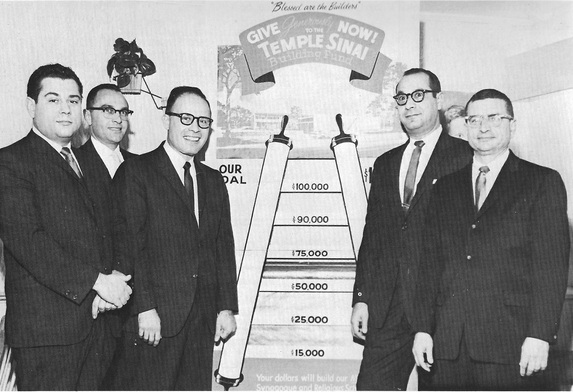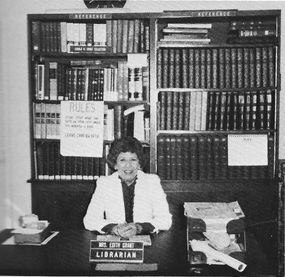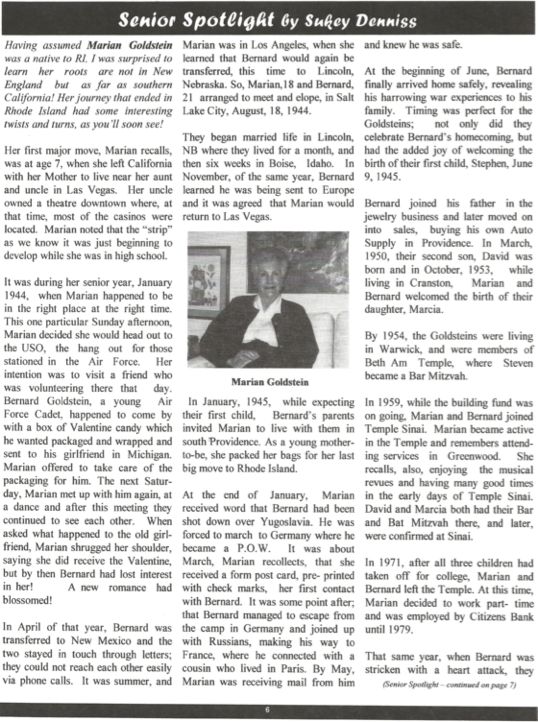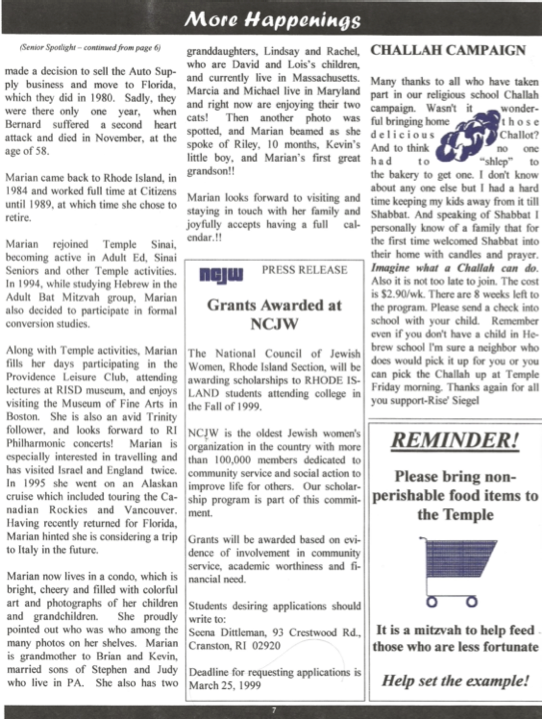OurHistory
August 2016
Cantor Deborah Johnson began her service to Temple Sinai
July 2014
Rabbi Jeff Goldwasser and Cantor Wendy Siegel began their service to Temple Sinai.
July 2003
Rabbi Peter W. Stein was installed as Rabbi.
July 1999
Rabbi David Lipman was installed as Rabbi.
1980
Cantor Remmie Brown began his 34 years of service to Temple Sinai.
July 1979
Rabbi George Astrachan was installed and served until retirement in 1999.
August 1964
Rabbi Jerome Gurland was installed.
June 4, 1961
Construction started and the formal dedication was on May 10, 1963.
September 1959
Rabbi Donald Heskins was installed as the first full-time Rabbi
March 7, l958
The first service at Greenwood Country Club, Warwick, was held with
Guest Rabbi Daniel L. Davis. A Torah was borrowed from Temple Beth El.
February 24, 1958
The name "Temple Sinai, Suburban Reform Temple," was officially accepted
by more than 40 member families.
January 1958
Ten families met to discuss the formation of a temple for the suburban area.
Cantor Deborah Johnson began her service to Temple Sinai
July 2014
Rabbi Jeff Goldwasser and Cantor Wendy Siegel began their service to Temple Sinai.
July 2003
Rabbi Peter W. Stein was installed as Rabbi.
July 1999
Rabbi David Lipman was installed as Rabbi.
1980
Cantor Remmie Brown began his 34 years of service to Temple Sinai.
July 1979
Rabbi George Astrachan was installed and served until retirement in 1999.
August 1964
Rabbi Jerome Gurland was installed.
June 4, 1961
Construction started and the formal dedication was on May 10, 1963.
September 1959
Rabbi Donald Heskins was installed as the first full-time Rabbi
March 7, l958
The first service at Greenwood Country Club, Warwick, was held with
Guest Rabbi Daniel L. Davis. A Torah was borrowed from Temple Beth El.
February 24, 1958
The name "Temple Sinai, Suburban Reform Temple," was officially accepted
by more than 40 member families.
January 1958
Ten families met to discuss the formation of a temple for the suburban area.
Temple Sinai's Presidents
|
1958-1960 Dr. Albert S. Goodman
1960-1963 Philip A. Segal, Jr. 1963-1965 Nathan Ludman 1965-1966 Raymond Gertz 1966-1969 Allen J. White 1969-1971 Benjamin Hazen 1971-1972 Bernard S. Goldberg 1972-1973 Robert F. Bell 1973-1974 Herbert S. Galkin 1974-1977 Jerome Kaplan 1977-1979 Adrian Horovitz 1979-1980 Norman Brill |
1980-1982 Irving J. Waldman
1982-1983 Junius Gertz 1983-1986 Eric Spitzer 1986-1988 Irving J. Waldman 1988-1990 Brian Messing 1990-1992 Frederick I. Berkowitz 1992-1994 Joel S. Chase 1994-1996 Joel K. Gerstenblatt 1996-1998 Richard T. Portno 1998-2001 Pamela C. Manekofsky 2001-2003 Lloyd Malin 2003-2005 Barry Rose |
2005-2007 Irene Fordon-Abbott
2007-2009 Ellen G. Knasin 2009-2011 David L. Fried, MD 2011-2013 Sherry Kriss 2013-2015 Ellie Wasser 2015-2017 Ellen L. Jordan 2017-2019 Susan R. Oclassen 2019- Gregg Rosen |
"A Remembrance of Things Past"
 Temple Sinai Building Fund Committee, circa 1960. From left to right: Skip Weingeroff, Norman Bienenfeld, Al Goodman, Al Bensusan, Oscar Davidson. Note that the fundraising goal to build the Temple was $125,000.
Temple Sinai Building Fund Committee, circa 1960. From left to right: Skip Weingeroff, Norman Bienenfeld, Al Goodman, Al Bensusan, Oscar Davidson. Note that the fundraising goal to build the Temple was $125,000.
On the occasion of the Temple's "Silver Anniversary" in 1983, Edith Grant created a book of memories from the congregation's first 25 years. The book includes this description of the Temple's founding:
It is our pleasure to ask you all to join us as we travel through a lane of recollection, with a nod of understanding to Marcel Proust as we refer to this yearbook as "A Remembrance of Things Past."
Some twenty-five years ago, the Jews of Rhode Island lived primarily in Providence. Those who did not, resided here and there in the communities of Cranston, Warwick, and East Greenwich. Many of these Jewish families were unaffiliated with any congregation. So, in essence, a vacuum existed. The need for Jewish personal relationships, as well as the need to express one's Jewish commitment were to be the prime considerations that dominated a soon to be evinced creative spirit.
As some of you reading this yearbook may recall, Dr. Al Goodman called his cousin Murray Miller, and said, "Let's start a Temple." Dr. Goodman had spoken with tribes at Beth Torah in Cranston, Temple Emanu-El in Providence, and to Rabbi William Braude of Beth-El. Barbara Miller wondered if a momentous undertaking of this kind were possible, as the winter of January 1958 loomed ahead.
The first order of business was to seek out like-minded Jews – whose religious, social, and educational needs would be served by a Reform synagogue. After initial discussions between Dr. Goodman and Dr. Miller, their respective friends were called to a meeting at Allen White's house. Where aspiration, conviction, and enthusiasm are concerned, the idea of a Reform congregation in the suburbs took hold with alacrity, and these couples decided to actively pursue their collective dream. An advertisement was placed in the Herald on the 7th of February 1958, and this ad requested all those interested in a new Reform synagogue to call Allen White and attend a meeting at the Nelson Aldrich School in Warwick, where Rabbi Albert Baum, Director of New Congregations of the Union of American Hebrew Congregations was the main speaker.
It is our pleasure to ask you all to join us as we travel through a lane of recollection, with a nod of understanding to Marcel Proust as we refer to this yearbook as "A Remembrance of Things Past."
Some twenty-five years ago, the Jews of Rhode Island lived primarily in Providence. Those who did not, resided here and there in the communities of Cranston, Warwick, and East Greenwich. Many of these Jewish families were unaffiliated with any congregation. So, in essence, a vacuum existed. The need for Jewish personal relationships, as well as the need to express one's Jewish commitment were to be the prime considerations that dominated a soon to be evinced creative spirit.
As some of you reading this yearbook may recall, Dr. Al Goodman called his cousin Murray Miller, and said, "Let's start a Temple." Dr. Goodman had spoken with tribes at Beth Torah in Cranston, Temple Emanu-El in Providence, and to Rabbi William Braude of Beth-El. Barbara Miller wondered if a momentous undertaking of this kind were possible, as the winter of January 1958 loomed ahead.
The first order of business was to seek out like-minded Jews – whose religious, social, and educational needs would be served by a Reform synagogue. After initial discussions between Dr. Goodman and Dr. Miller, their respective friends were called to a meeting at Allen White's house. Where aspiration, conviction, and enthusiasm are concerned, the idea of a Reform congregation in the suburbs took hold with alacrity, and these couples decided to actively pursue their collective dream. An advertisement was placed in the Herald on the 7th of February 1958, and this ad requested all those interested in a new Reform synagogue to call Allen White and attend a meeting at the Nelson Aldrich School in Warwick, where Rabbi Albert Baum, Director of New Congregations of the Union of American Hebrew Congregations was the main speaker.
 Temple Librarian, Mrs. Edith Grant
Temple Librarian, Mrs. Edith Grant
From whence came the support? This Temple did not grow fully-formed as the mythological goddess Venus painted by Botticelli. No, not at all. Sources of support sprang forth from many quarters. Temple Beth-El lent the Torah and prayer books. Rabbi William Braude gave advice, the UAHC sent written recommendations, rabbis for services and gave invaluable guidance. Churches in Cranston and Warwick offered the use of their facilities, and school space was rented at the Garden City School. Baking for the Oneg Shabbats and other functions was done by a constantly supportive and rotating group of women soon to become the Sisterhood, while carrying chairs, setting up for services, and bringing the Torah fell to the men who became the Brotherhood. An ark was needed for the Torah and Arnold Fellman built it and carried it to Greenwood Hall for the services over the years Sinai used those facilities.
Within that first year, a part-time rabbi was engaged, Rabbi Robert Schenkerman who came each weekend from New York. According to various reminiscences, Rabbi Schenkerman advised that he could purchase a Torah in New York for $300. Oscar Davidson and Arnold Fellman were to be a committee to raise these funds to defray the cost of Sinai's first Sefer Torah. However, they both contacted twenty-eight members and said "Give me $10 for the Torah." To this day I understand, they both have heard the question "Why didn't you ask me?"
By March of 1959 the Board of Trustees was granted the right to not only seek a full-time rabbi, but to negotiate for a site for the establishment of a building to become Sinai's permanent house of worship.
In May of 1960 an option on 11.6 acres of land at Meshanticut Green was taken. The location seemed most suited to the present and future members living in the Cranston, Warwick and East Greenwich communities.
It took just three Rosh Hashanahs of prayer for good years to reach the auspicious date of the fourth of June 1961 when ground breaking ceremonies, attended by state and civic officials and rabbinic leaders took place.
Within that first year, a part-time rabbi was engaged, Rabbi Robert Schenkerman who came each weekend from New York. According to various reminiscences, Rabbi Schenkerman advised that he could purchase a Torah in New York for $300. Oscar Davidson and Arnold Fellman were to be a committee to raise these funds to defray the cost of Sinai's first Sefer Torah. However, they both contacted twenty-eight members and said "Give me $10 for the Torah." To this day I understand, they both have heard the question "Why didn't you ask me?"
By March of 1959 the Board of Trustees was granted the right to not only seek a full-time rabbi, but to negotiate for a site for the establishment of a building to become Sinai's permanent house of worship.
In May of 1960 an option on 11.6 acres of land at Meshanticut Green was taken. The location seemed most suited to the present and future members living in the Cranston, Warwick and East Greenwich communities.
It took just three Rosh Hashanahs of prayer for good years to reach the auspicious date of the fourth of June 1961 when ground breaking ceremonies, attended by state and civic officials and rabbinic leaders took place.





